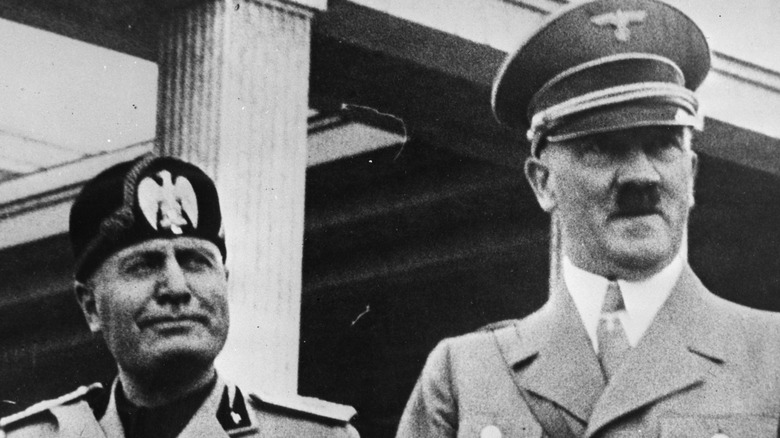The Surprising People Behind The World's Nutella Obsession
In 1806, Napoleon Bonaparte (above), Emperor of France and King of Italy, instituted the Continental System, a European-wide blockade of Great Britain, the main financier of his opponents. The Encyclopaedia Britannica explains that the desired end of this blockade was to destroy the trade upon which the British economy relied. Then, he could either invade or force them into negotiations advantageous for him.
That failed, but its aftereffects can be felt today on the grocery store shelves in the form of Nutella jars. According to Exploring History, among the victims of Napoleon's blockade were the chocolate makers of Turin. As the naval superpower at the time, Great Britain was home to a large portion of the world's international traders, including the ships that ferried cocoa beans from South America to the chocolatiers in Turin.
With that supply chain disrupted, the Turin chocolate makers had to turn to more novel solutions. What they did was to incorporate hazelnuts into their chocolate so that the limited amount of cocoa beans could continue to meet chocolate demands. While this pairing was already traditional, the fact that the continued blockade forced the market to fill with the hazelnut chocolate spread called gianduja meant that the dish lasted even after the blockade was lifted. (You can make gianduja today by following a recipe supplied by Taste of Home.)
Another war, another innovation
Gianduja, however, is not Nutella. That conceptual jump had to wait another century for another war that embroiled all of Europe: World War II. Just as the effects of Napoleon's Continental System meant that cocoa beans became a scarce ingredient, the rationing and trade disruptions of the Second World War reduced the availability of chocolate for civilians, including those of Axis-controlled Europe. To once more make up for this scarcity, as History Daily describes, Pietro Ferrero of Italy made gianduja, but with more sugar and cocoa butter, which did not suffer from wartime rationing. He called the new spread Pietro Gianduja. Twenty years later, his son renamed it Nutella because it was made from nuts.
The South China Morning Post (posted at Line Today) reported in 2019 that the contemporary differences between gianduja and Nutella are that Nutella uses more ingredients than the local hazelnuts, sugar, and cocoa found in gianduja. Gianduja contains 55% hazelnuts, while Nutella has 13%. (Mental Floss points out that the Ferrero company buys about 25% of the world's hazelnut supply every year.) Furthermore, Nutella is primarily a spread, while gianduja was its own product that did not come in a jar. However, as Nutella proved during wartime production, it is more efficient to make and so is found everywhere. Gianduja retains an artisanal status that you must proactively search and pay extra for.

